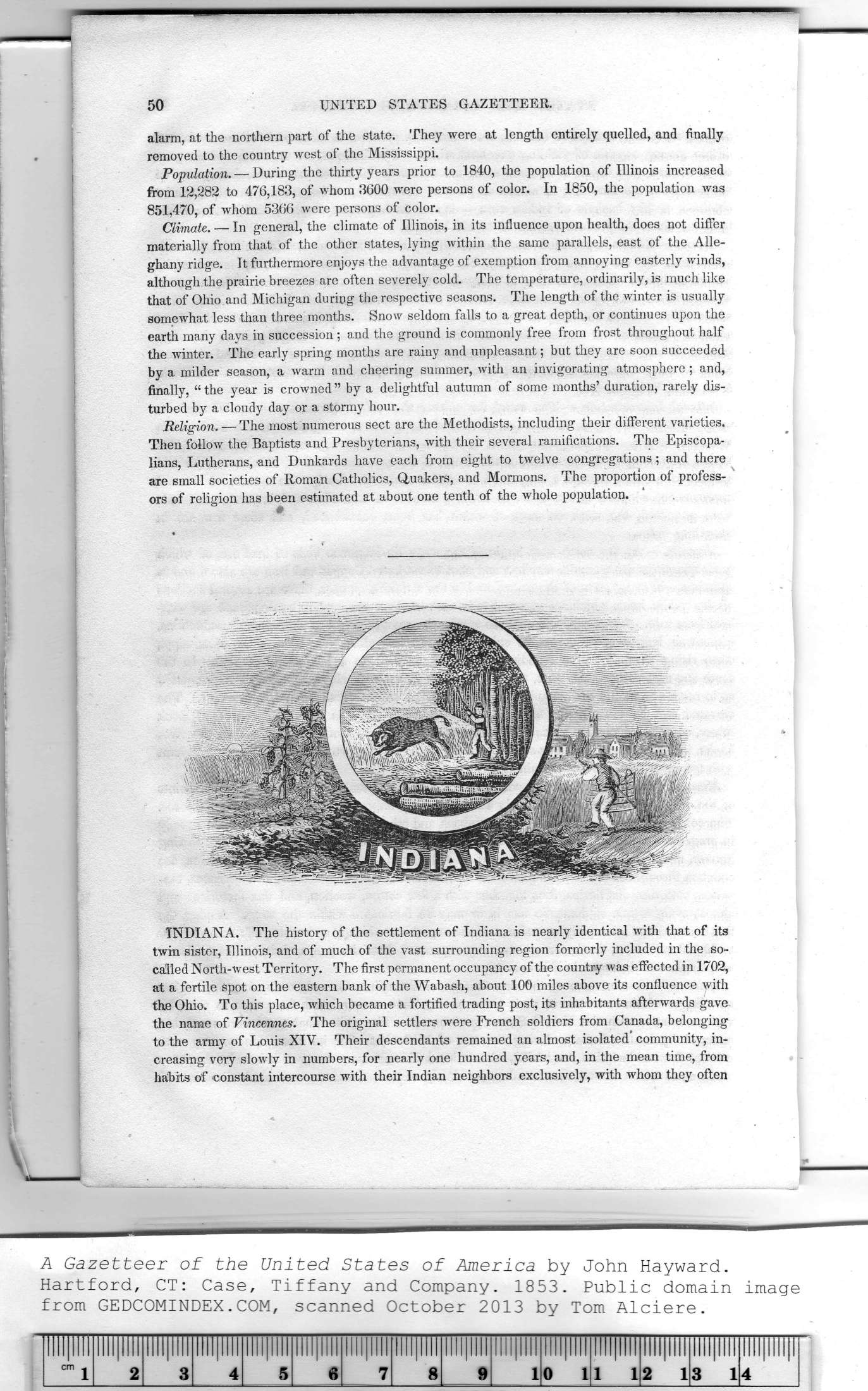|
|
Note: Ctrl and + increases the font size of the text below, Ctrl and - decreases it, and Ctrl and 0 resets it to default size.
50 UNITED STATES GAZETTEER.
alarm, at the northern part of the state. They were at length entirely quelled, and finally
removed to the country west of the Mississippi.
Population. — During the thirty years prior to 1840, the population of Illinois increased
from 12,282 to 476,183, of whom 3600 were persons of color. In 1850, the population was
851,470, of whom 5366 were persons of color.
Climate. — In general, the climate of Illinois, in its influence upon health, does not differ
materially from that of the other states, lying within the same parallels, east of the Alle-
ghany ridge. It furthermore enjoys the advantage of exemption from annoying easterly winds,
although the prairie breezes are often severely cold. The temperature, ordinarily, is much like
that of Ohio and Michigan during the respective seasons. The length of the winter is usually
somewhat less than three months. Snow seldom falls to a great depth, or continues upon the
earth many days in succession; and the ground is commonly free from frost throughout half
the winter. The early spring months are rainy and unpleasant; but they are soon succeeded
by a milder season, a warm and cheering summer, with an invigorating atmosphere ; and,
finally, “ the year is crowned " by a delightful autumn of some months' duration, rarely dis-
turbed by a cloudy day or a stormy hour.
Religion. — The most numerous sect are the Methodists, including their different varieties.
Then follow the Baptists and Presbyterians, with their several ramifications. The Episcopa-
lians, Lutherans, and Dunkards have each from eight to twelve congregations ; and there
are Bmn.11 societies of Roman Catholics, Quakers, and Mormons. The proportion of profess-
ors of religion has been estimated at about one tenth of the whole population.
INDIANA. The history of the settlement of Indiana is nearly identical with that of its
twin sister, Illinois, and of much of the vast surrounding region formerly included in the so-
called North-west Territory. The first permanent occupancy of the country was effected in 1702,
at a fertile spot on the eastern bank of the Wabash, about 100 miles above its confluence with
the Ohio. To this place, which became a fortified trading post, its inhabitants afterwards gave
the name of Vincennes. The original settlers wmre French soldiers from Canada, belonging
to the army of Louis XIV. Their descendants remained an almost isolated' community, in-
creasing very slowly in numbers, for nearly one hundred years, and, in the mean time, from
habits of constant intercourse with their Indian neighbors exclusively, with whom they often
|
Illllllll |
I|llll|llll|llll |
Illllllll |
Illllllll |
Illllllll |
llll|llll |
llll llll |
|
|
Illllllll |
Illllllll |
Illllllll |
Illllllll |
llll|l!ll|l |
|
cm j |
2 3 |
4 |
5 |
6 |
7 |
8 |
9 |
1 |
0 1 |
1 1 |
2 1 |
CO |
4 |
|
